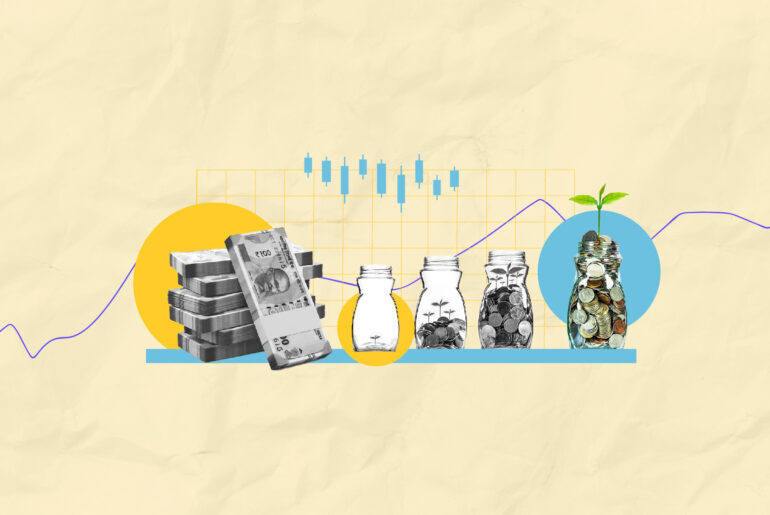Last Updated on Apr 6, 2023 by
When it comes to investing in the stock markets, nothing catches the investors’ imagination, quite like the mention of multi-bagger stocks. Investors are constantly scanning markets, intending to grow their wealth manifold by buying the right stock at the right price. Media also loves talking about multi-bagger stocks, which is why business television channels are constantly abuzz with stock recommendations from star analysts that have doubled or tripled or even gone up 10 times in just a few years.
Indian stock markets have witnessed bull markets between 2003 to 2008, in which the market rallied 623%. Also, from 2009 to 2015, markets rallied over 380%. As India emerges well out of the pandemic and is led by various other systematic and unsystematic factors, the Indian markets are experiencing a robust bull market with similar characteristics to the previous bull runs.
In this gold rush, several fast-growing companies have delivered multi-bagger returns that have made investors wealthy. All these data points look great in retrospect, but what can you do to identify multi-bagger stocks in the time to come?
Let us read everything you need to know about multi-bagger stocks.
Table of Contents
Scalable business model and strong leadership
When it comes to identifying multi-bagger stocks, they have to be high-quality businesses with sustainable growth potential. The company should grow its revenues consistently (ideally 20% or more) over a long period or at least have the visibility or potential to generate such revenues in the future. This means the stock also has to consistently deliver returns on equity (ROE, which is profit as a percentage of shareholder’s equity) over long periods to stand out from the other stocks.
The management, too, must be of high caliber and be constantly focused on holistically promoting the company. When we talk about management quality, we often talk about promoters, too- their existing track record is probably the biggest barometer for future success.
Also, if a company fails on the barometer of scalability, its stock may not run to become a multi-bagger.
Strong foundation
Ideally, multi-baggers should have an ecosystem or moat protecting their businesses to have a monopoly advantage. This is more likely to happen if companies find unique ways of conducting business and command a premium in the process (like a first-mover advantage). Some examples of businesses with moats are those that offer some kind of a network effect, those with patents protecting them from the competition, and also those with government grants.
Low P/E stocks
Often investors assume P/E as the ultimate way to find quality stocks that have the potential to become a multi-bagger in the long run. But this is not always true. Multibagger stocks are not about identifying if a stock is trading at a high or low P/E ratio. This ratio is largely affected by stock prices that change nearly every minute.
One may not be able to identify future multi-baggers if they rely only on the P/E ratio or, for that matter, only on a handful of financial ratios. A holistic analysis of the company and identifying its tipping point is essential for making profits from multi-baggers.
Don’t book profits early
No stock is a guaranteed multi-bagger. Time is a very critical factor to remember when dealing with multi-bagger stocks. Many factors may prevent a well-oiled company from becoming a multi-bagger immediately. The key is to hold quality stocks (after good research) for a long time.
Stocks that go on to deliver 100-fold returns are often observed to be in cycles of sharp run-up and stagnation. So it’s easy to get impatient and book profits during such phases. But, if these stocks have potential and quality, long-term investors could benefit exponentially.
Multibagger stocks can bring you returns only if you hold on to them long enough.
Focus on mid-cap and small-cap stocks
Large-caps can also make multi-baggers, but it is harder for them to deliver exponential returns. The reason for this is that most large-cap stocks are well known and have probably already hit their potential or are close to it. There are only a handful of companies in the world that have made 100-fold returns historically. By the time you start investing in them, they will already have a lot of investors. Of course, some companies suddenly become multi-baggers, having been small-caps earlier, but these stocks make up for only a fraction of the market capitalization of all mid and small-cap stocks put together.
The Pareto principle holds here – 80% of the gains will come from 20% of the stocks you invest in. So if you focus on a few smaller stocks, take your time to understand them, and do a lot of due diligence, you may be able to get disproportionately high returns from them.
Mid-cap and small-cap companies exhibit a higher potential to become multi-baggers as they expand aggressively, take higher risks, and are yet to reach their true potential.
Consistent profitability and earnings growth
It all boils down to finding out if the company is profitable and growing. This rule will apply even for businesses with moats or network effects because they tend to be more cyclical than other businesses. You can see how many such companies go on to become multi-baggers by looking at their historical track records.
The need to focus on profitability and growth arises from the simple fact that strong businesses make multi-baggers, not speculative bets. There is always an element of risk in any stock you invest in, but if it’s a small business or has no moat or no track record of profitability, it may have very low chances of turning profitable.
Avoid tips
Many gullible investors fall for tips, often eroding their wealth. Media and all other social platforms are filled with tips and market gurus offering suggestions on when to trade, often predicting if stocks could earn them multi-bagger returns. If you take such tips seriously without due diligence, you could end up losing all capital.
No tips and tricks can help identify multi-bagger stocks. A lot of experience, research, and profound knowledge of all nuances of markets is paramount to predicting if a stock could turn multi-bagger. Even after this, the predictions could turn out to be completely wrong. It is the prime reason why stock markets are termed as risky and unpredictable.
Never take tips at face value and always read up on the company before investing.
Conclusion
Multibagger stocks are those that may, in the run, experience sudden growth and disruption, giving investors multifold returns. These stocks have been observed to have a strong foundation, a business model that is scalable and has earned itself some kind of competitive advantage. A holistic view and knowledge of the market are essential to identifying such stocks. Consult your financial advisor before investing in any stock or scheme.




